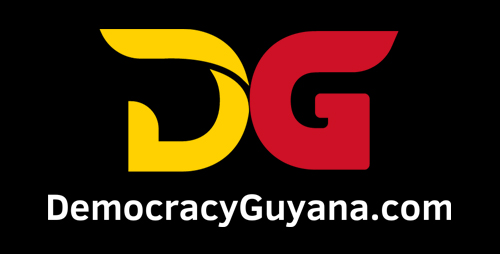Less than a month ago, Guyana became the first country in the world to be certified for carbon credits that airlines can formally procure. In the Paris Agreement, for the reduction of carbon emissions and in the fight against climate change, airlines have been obligated to cut their carbon emissions. Like other industries, such as the OIL and GAS industry, the airline industry could procure carbon credits from carbon credit-rich countries. While there are several countries with potential carbon credit resources, only Guyana has been formally certified by the UN accrediting body at this time.
Overall, Guyana was certified in 2023 by the Architecture for REDD+ Transactions (ART), a UN body to regulate carbon sales, with 33.7M TREES carbon credits for the period 2016 to 2020. Guyana is the first country ever to be issued certification for the sale of carbon credits. This was the first installment, and Guyana is expected to be certified for more carbon credits for years after 2020. Out of this first installment, Guyana has already sold 30%, for US$750M, to the oil giant Hess. With this first installment, should Guyana sell at the same price it was able to sell to Hess, Guyana could secure a minimum of US$2.5B.
The price per ton of carbon credit is expected to soar, and Guyana could therefore secure far north of US$2.5B for this first certified installment. With Guyana certified for airlines to procure its carbon credits, the competition for Guyana’s carbon credits is likely to soar, leading to higher carbon credit prices.
The LCDS is now a major revenue pillar for Guyana. Having started with President Bharrat Jagdeo in 2010, it is now reaching unprecedented new heights under President Irfaan Ali. Had David Granger not replaced the LCDS with his foolishness called the Green State, in which he wanted every building painted green; everyone wearing green clothes; paint their homes, fences, bridges and vehicles green; Guyana’s LCDS would have reached even higher heights today. Note that Granger’s much-touted but disgraced Green State Strategy never generated a cent for Guyana.
Still want to know why Guyana reaches new heights in economic growth and social welfare of its people when the PPP is in government, and always seems to be in a hurry to reach the economic and poverty abyss when the PNC is in government? The PNC runs the country with slogans like the Green State, and older slogans like Feed, House and Clothe the Nation. The PPP runs the country with vision, plans, with skills. The LCDS versus the Green State is a clear example of the distinction between the PPP and the PNC.
The LCDS, formalised under President Bharrat Jagdeo in 2010, is a visionary strategic development plan, and one that sought to place Guyana firmly at the centre of fighting a global existential problem. Make no mistake, global warming and climate change represent a twin existential crisis. Guyana has made zero contribution to the problem, but Guyana is helping to fight carbon emissions, global warming, and climate change. Bharrat Jagdeo and the PPP Government had the vision and saw the opportunity for Guyana to become the earth’s lung. He saw the opportunity to convert our forest into a recurring financial resource, far richer than cutting down our forest. The LCDS, essentially, was a strategy premised on the fact that Guyana’s forest is worth more to us and the world by leaving it alone, rather than cutting it down, like most countries, particularly the rich countries, have done.
Today, President Irfaan Ali has ensured that his government return to a strategy that gained global recognition under Bharrat Jagdeo. Now that the world has gotten a little bit more serious about reducing carbon emissions, President Irfaan Ali is ensuring that Guyana returns to the vision. Other countries are trying to model Guyana’s example.
When first announced, and the plan was released in 2010, the PNC ridiculed the strategy. Indeed, others did the same. Some of those who today are part of the usual suspects (Freddie Kissoon aptly deem them TUS) ridiculed the LCDS, and boldly but wrongly predicted that Guyana would fail to generate any revenue from the LCDS. When Norway stepped up in early 2011 to procure US$250M over five years, TUS wrote Norway to derail the strategy.
In 2015, the PNC-led David Granger-led APNU/AFC Government dumped Guyana’s LCDS. They replaced it with a confusing new strategy called the Green State Strategy (GSS). The GSS downplayed the carbon credit nucleus of the LCDS. It also dumped critical components of the development plan. It terminated the plan for hydroelectricity with Amaila, abandoned the Amerindian Land Titling Exercise, and eliminated the Amerindian Development Plan. It replaced the LCDS with a plan to put together several small solar farm projects, which were a small part of the LCDS. Note that there is not a single one of these farms working today. The Mabaruma Solar Farm was the only one started. It is today overgrown with grass and bush. The GSS also promoted painting buildings and other state properties in green. It started to force public servants to wear green, and promoted a green paint industry. This is the small-mindedness of the crew that is now led by Aubrey Norton.
The naysayers presently are trying their best to somehow find something wrong with the LCDS, claiming the LCDS and the OIL and GAS industry cannot function simultaneously. They want OIL to stop, and they reject the shore-based gas plants which can reduce carbon emissions and cut electricity prices by at least 50% immediately.
Even their most ardent followers reject the naysayers’ argument that the Green State Strategy is superior.
The LCDS has not merely generated new resources for Guyana, it has brought prestige to Guyana, and has established Guyana as a powerhouse in visionary planning and in the fight against climate change.





